The
presbytery
is divided from the nave by two
triumphal arches
.
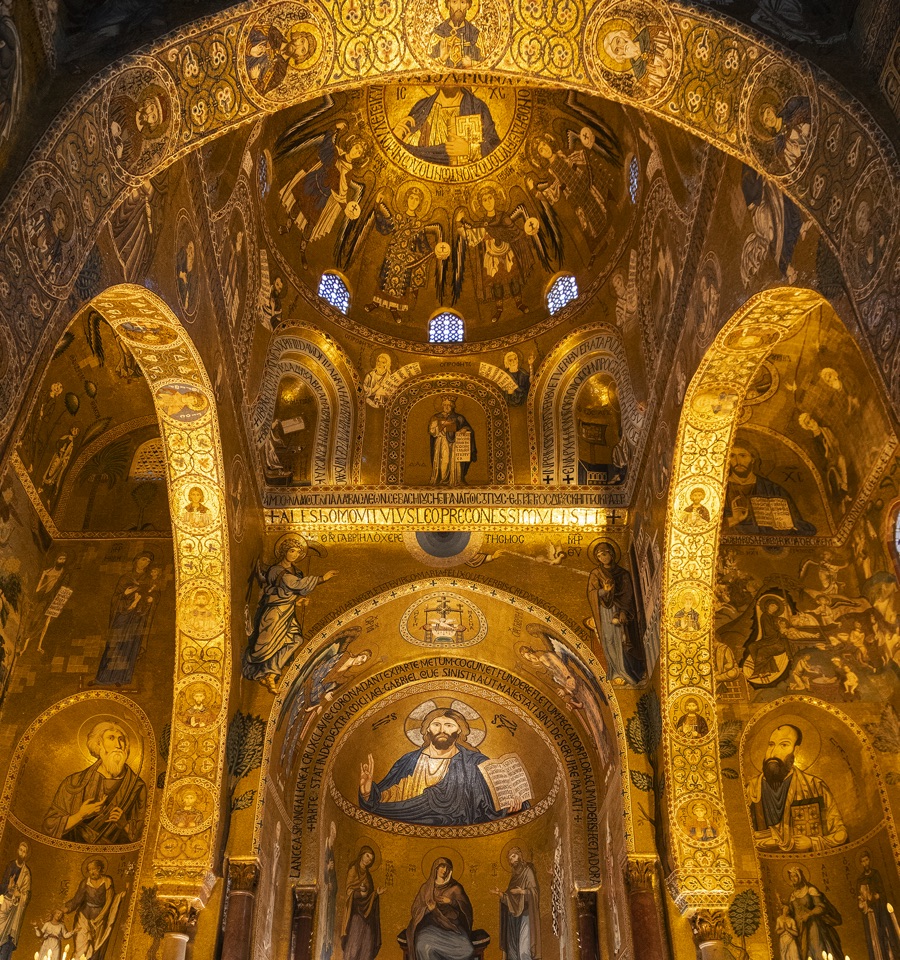 The first, which separates the hall from the sanctuary, depicts the scene of Jesus in the Temple,
The first, which separates the hall from the sanctuary, depicts the scene of Jesus in the Temple, 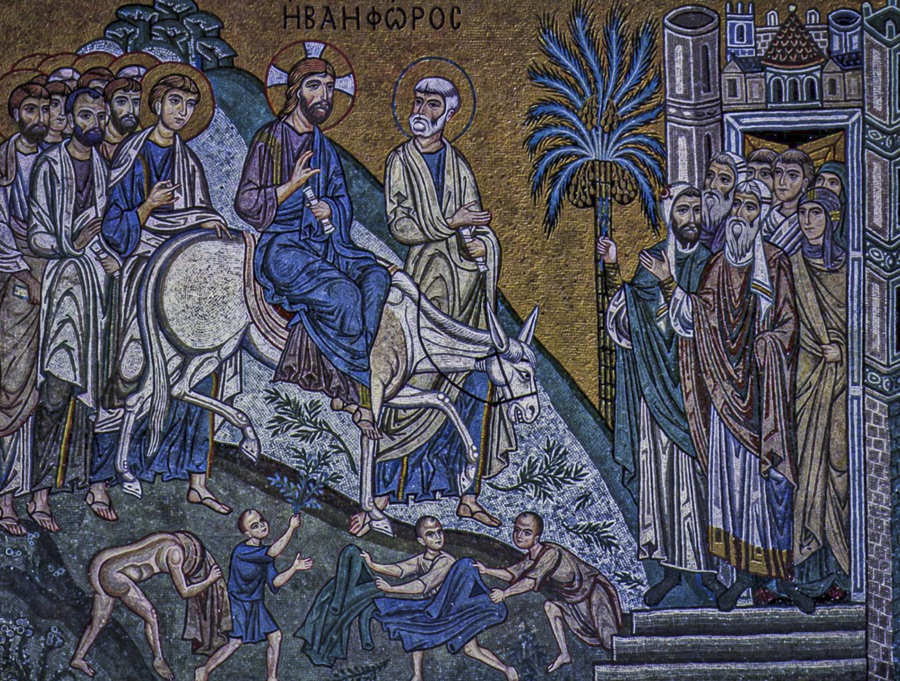 while the second, near the
apse
while the second, near the
apse
, as is customary in Byzantine mosaic cycles, represents the Annunciation: the Announcing Angel is on the left and the Virgin is on the right.
 The enlargement of the Royal Palace buildings, which incorporated the Palatine Chapel, led to the transformation of the apse area from the 16th century onwards.
The enlargement of the Royal Palace buildings, which incorporated the Palatine Chapel, led to the transformation of the apse area from the 16th century onwards.
The original polygonal perimeter wall was altered and the windows in the drum of the three apses were closed. This damage was remedied by mosaic decorations in harmony with the surroundings. These decorations included the figure of the Madonna, seated on a chair, in the central apse, between Mary Magdalene and St John the Baptist; 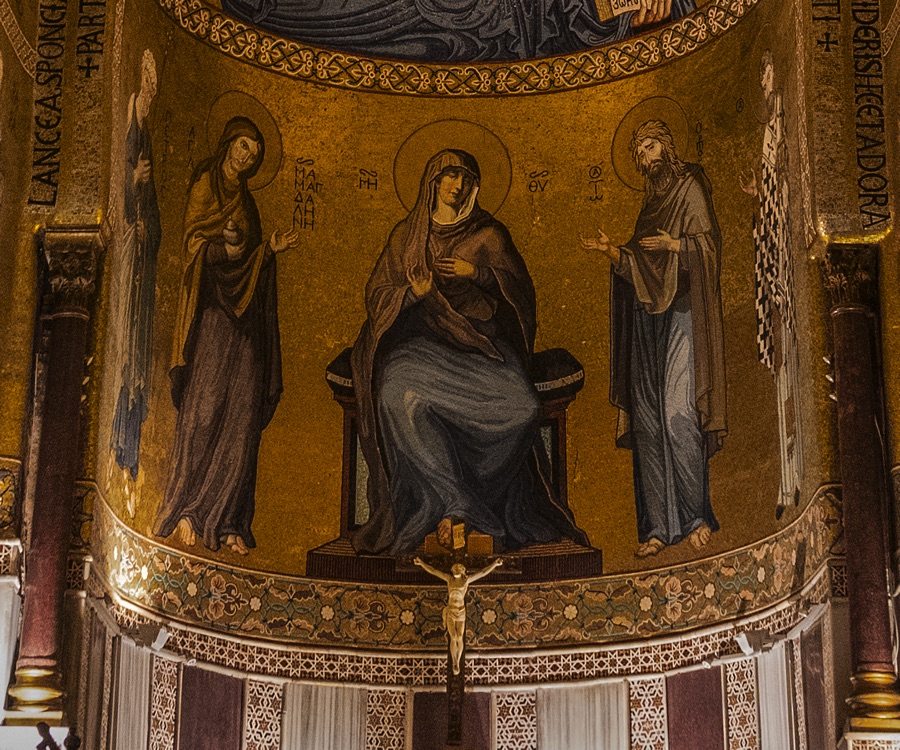 in the right-hand apse, St Anne and Mary as a child; and in the
in the right-hand apse, St Anne and Mary as a child; and in the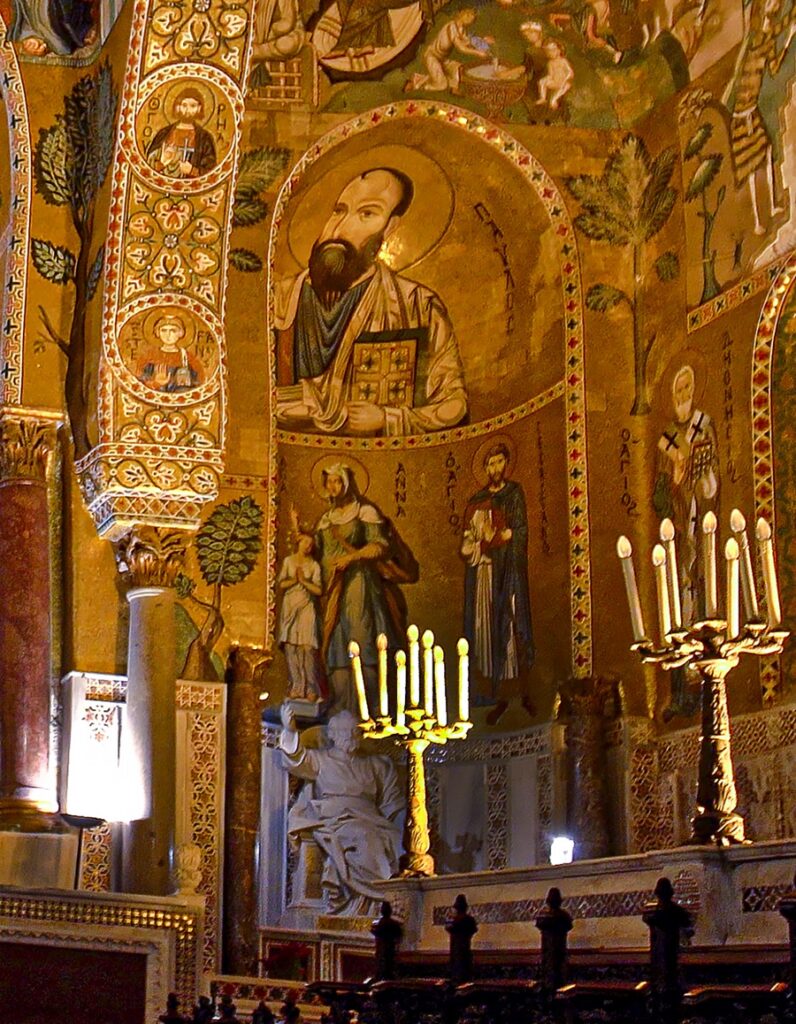 left-hand apse, an 18th-century mosaic by Santi Cardini depicting St Joseph with the baby Jesus.
left-hand apse, an 18th-century mosaic by Santi Cardini depicting St Joseph with the baby Jesus.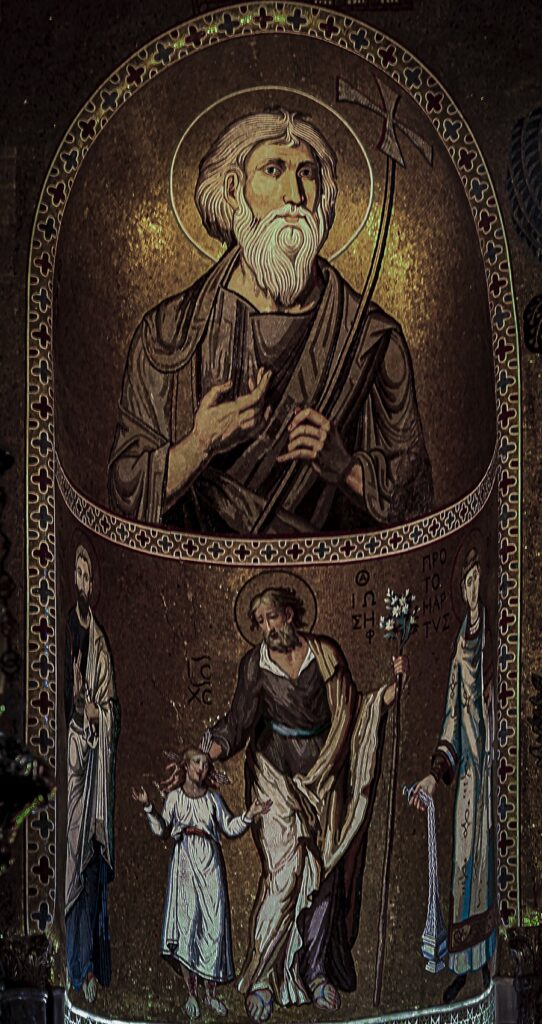 The central apse has
Christ Pantocrator
The central apse has
Christ Pantocrator
in the dome, giving his blessing,
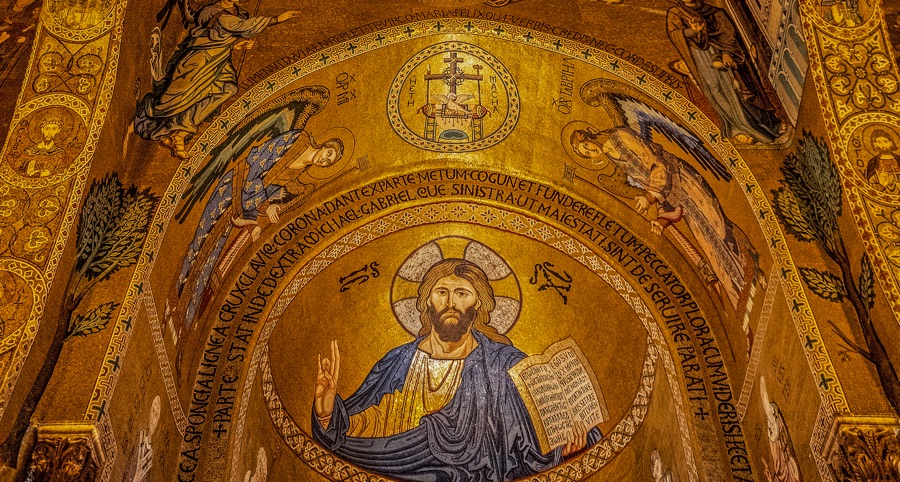 with the Gospel in his hands and the Virgin Mary in the basin, between Peter and Mary Magdalene on the left and John the Baptist and James the Apostle on the right.
with the Gospel in his hands and the Virgin Mary in the basin, between Peter and Mary Magdalene on the left and John the Baptist and James the Apostle on the right. 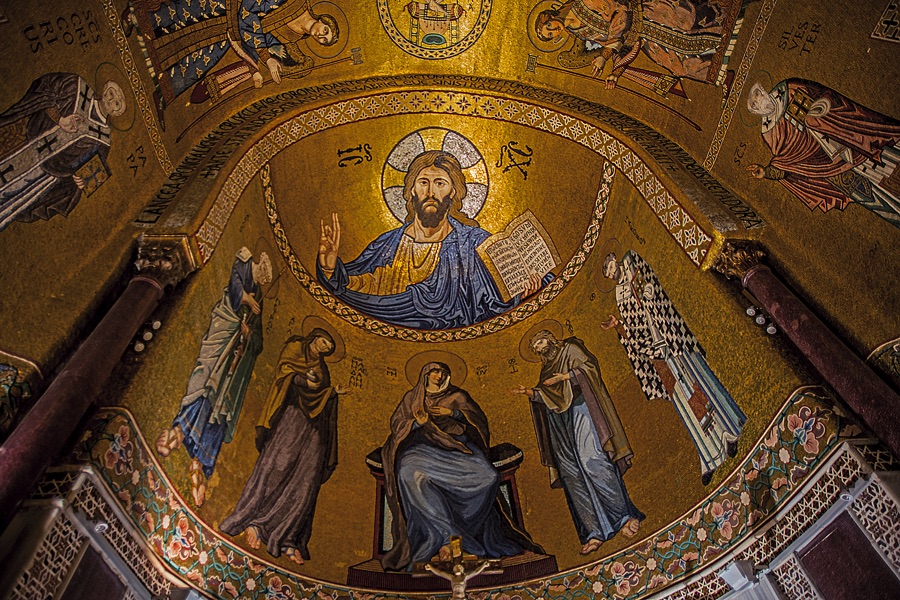 Above, there is the dove of the Holy Spirit,
Above, there is the dove of the Holy Spirit, 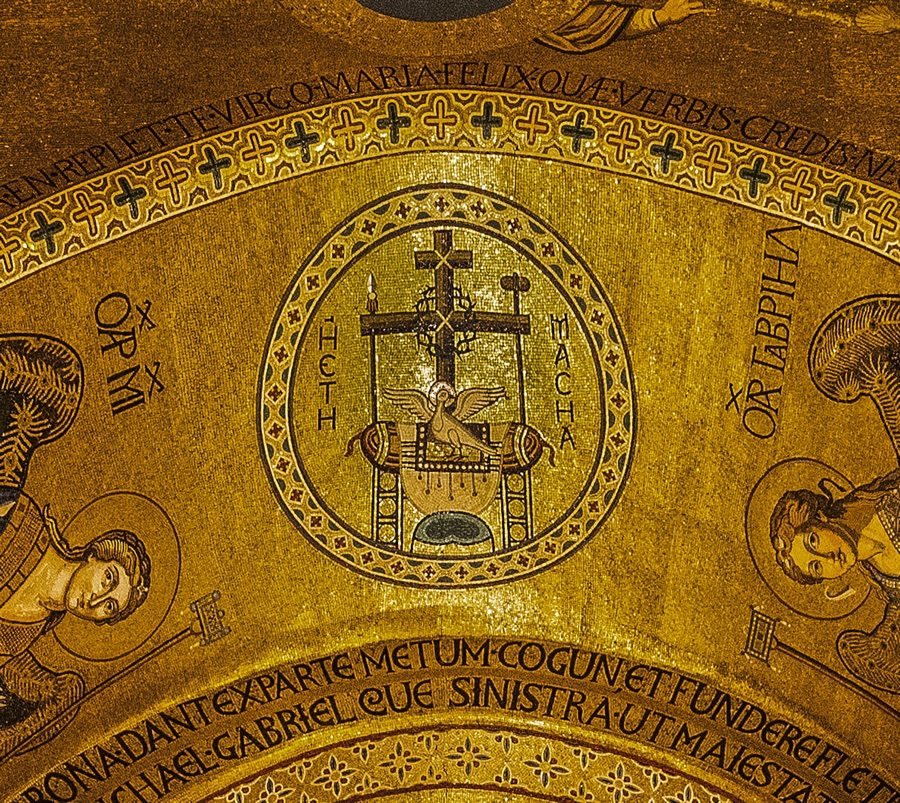 the symbols of the Passion and
Etimasia
the symbols of the Passion and
Etimasia
. In the medallions of the inner sides of the longitudinal arches and the triumphal arch, there are images of saints.
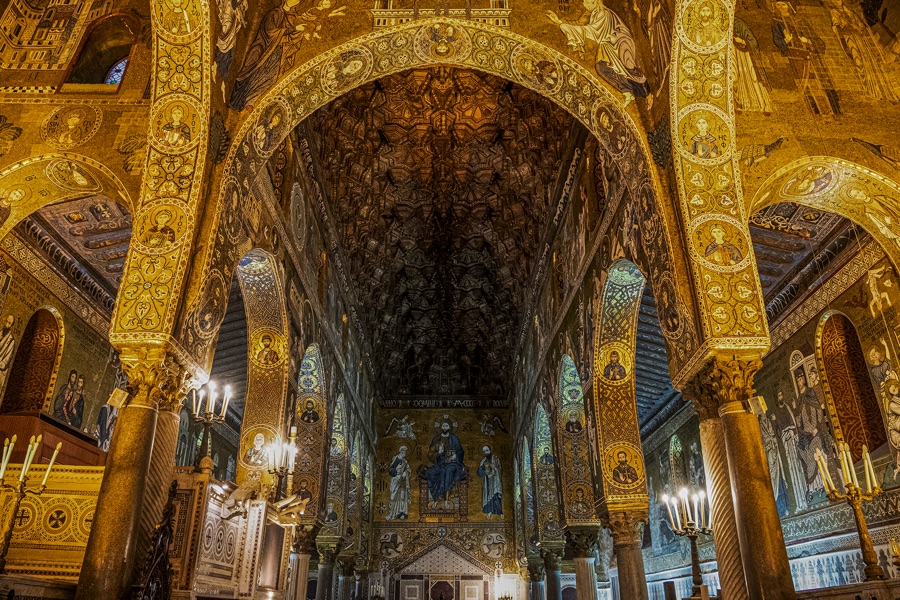 The space is surmounted by a dome in the centre of which the blessing Christ Pantocrator is enclosed in a golden circle
The space is surmounted by a dome in the centre of which the blessing Christ Pantocrator is enclosed in a golden circle 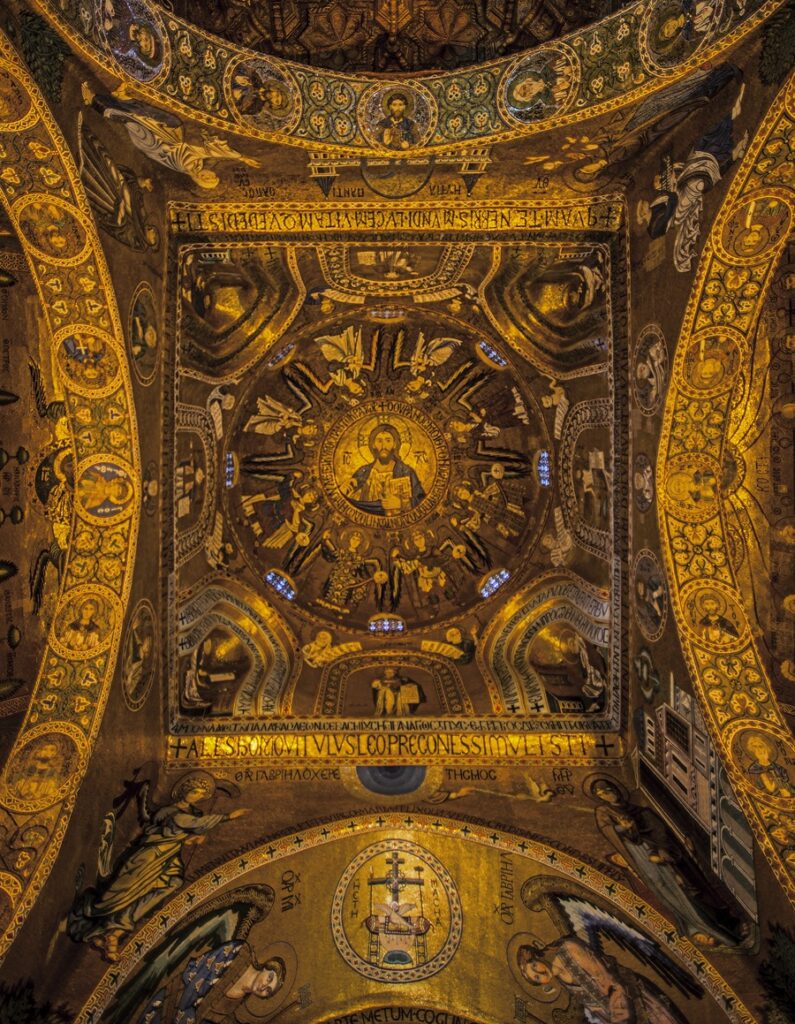
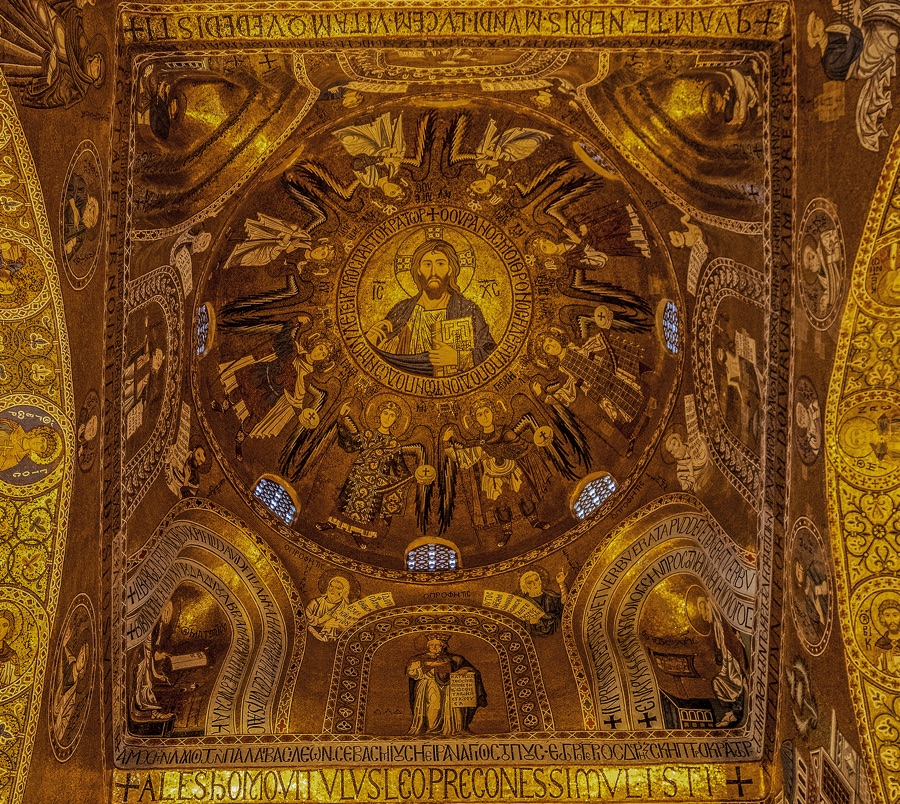 and surrounded by a host of
eight angels and archangels
and surrounded by a host of
eight angels and archangels
, all dressed in royal robes and four holding the
Globus Cruciger
, or “the orb and cross”, in their hands.
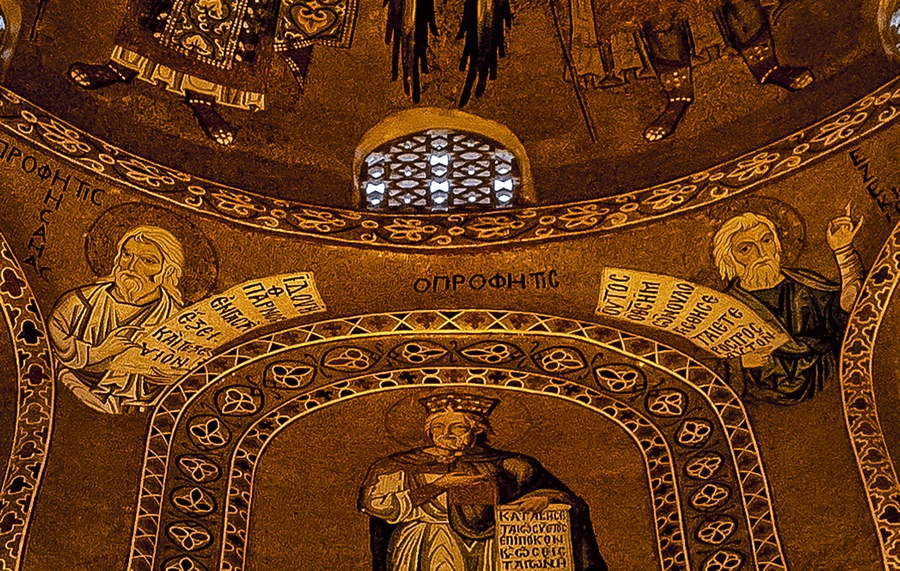 The prophets Isaiah, Jeremiah, Ezekiel, Jonah, Daniel, Moses, Elijah and Elisha, holding scrolls, are depicted on the edges of the drum. In the tondos above the supporting arches of the dome are portraits of David, Solomon, Zechariah and John the Baptist.
The prophets Isaiah, Jeremiah, Ezekiel, Jonah, Daniel, Moses, Elijah and Elisha, holding scrolls, are depicted on the edges of the drum. In the tondos above the supporting arches of the dome are portraits of David, Solomon, Zechariah and John the Baptist. 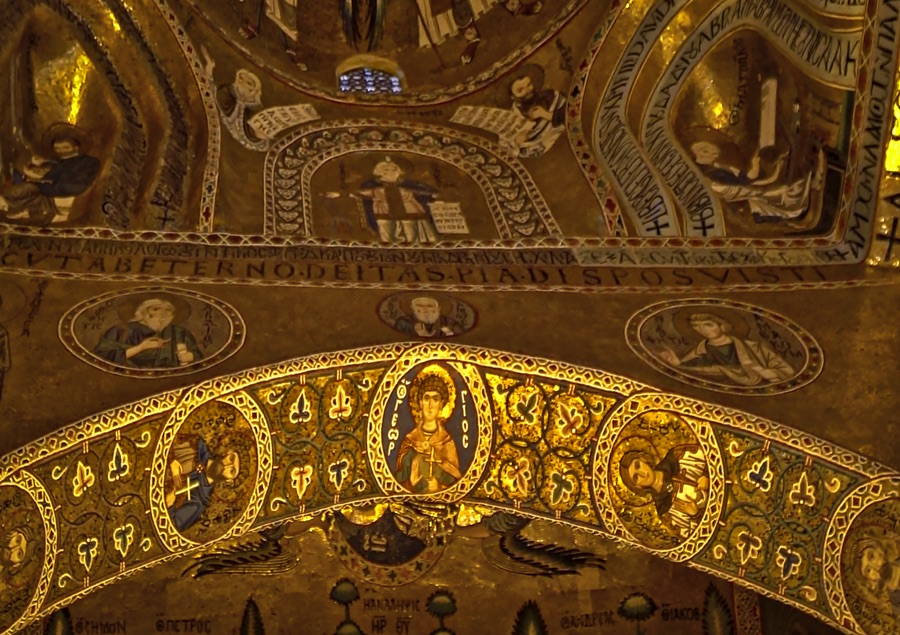 In the corner niches, the four Evangelists are depicted: Matthew, Luke, Mark, John.
In the corner niches, the four Evangelists are depicted: Matthew, Luke, Mark, John.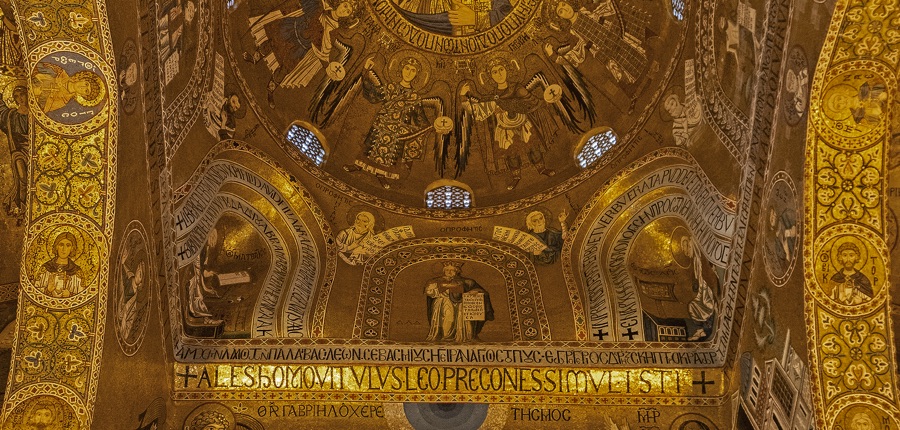 At the base of the drum, an inscription in Greek reads 28 April 1143 and recalls the day of the consecration. The side apses, as usual, are dedicated to St. Peter and St. Paul.
At the base of the drum, an inscription in Greek reads 28 April 1143 and recalls the day of the consecration. The side apses, as usual, are dedicated to St. Peter and St. Paul.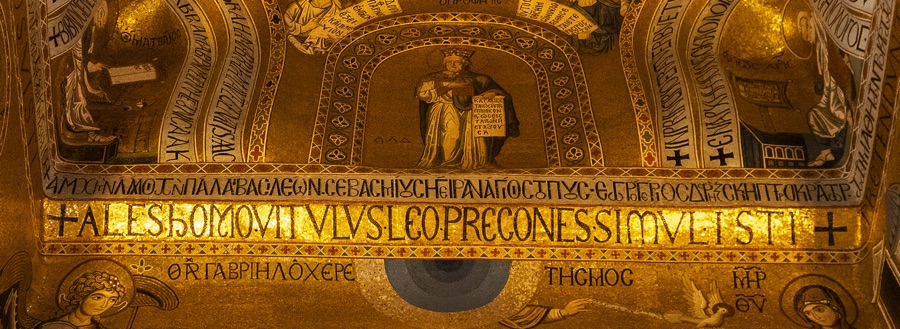
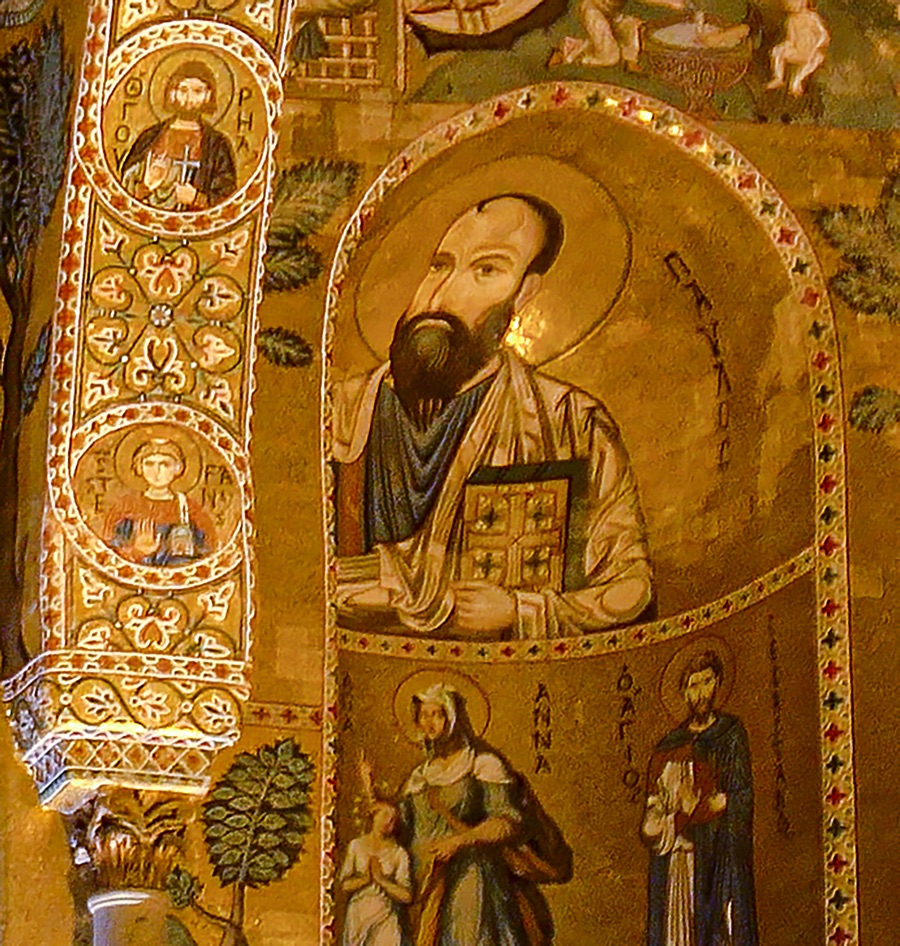 In the right
transept
In the right
transept
, at the
prothesis
, above the altar, there is a depiction of St. Anne and the child Mary and St. Paul, to whom the chapel is dedicated, is depicted in the apse basin. In the upper part, you can admire one of the oldest scenes of the
Nativity of Jesus
, rich in symbols and allegories, and the Christ Pantocrator with the Gospel of John in his hands, while blessing the faithful.
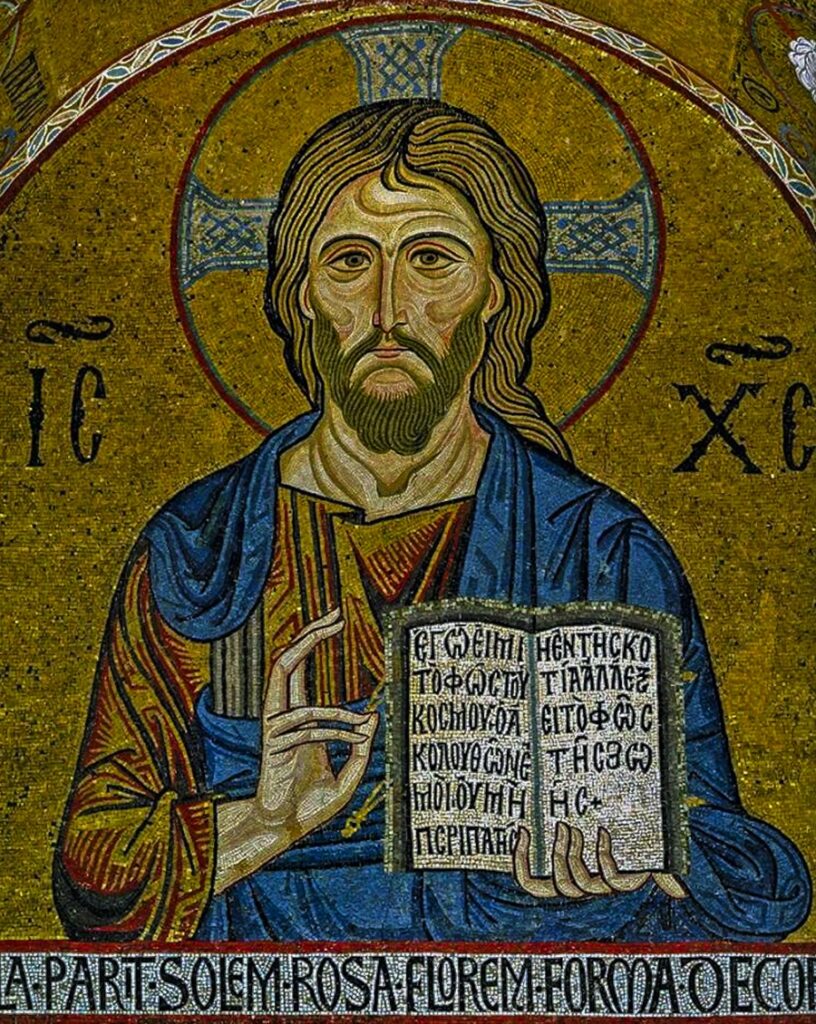 The southern transept continues with scenes from the life of Christ: the proclamation to the shepherds, the flight into Egypt, the Baptism, the Transfiguration, the Resurrection of Lazarus, the entry into Jerusalem. On the arch five prophets and on the vault, the Pentecost is depicted.
The southern transept continues with scenes from the life of Christ: the proclamation to the shepherds, the flight into Egypt, the Baptism, the Transfiguration, the Resurrection of Lazarus, the entry into Jerusalem. On the arch five prophets and on the vault, the Pentecost is depicted.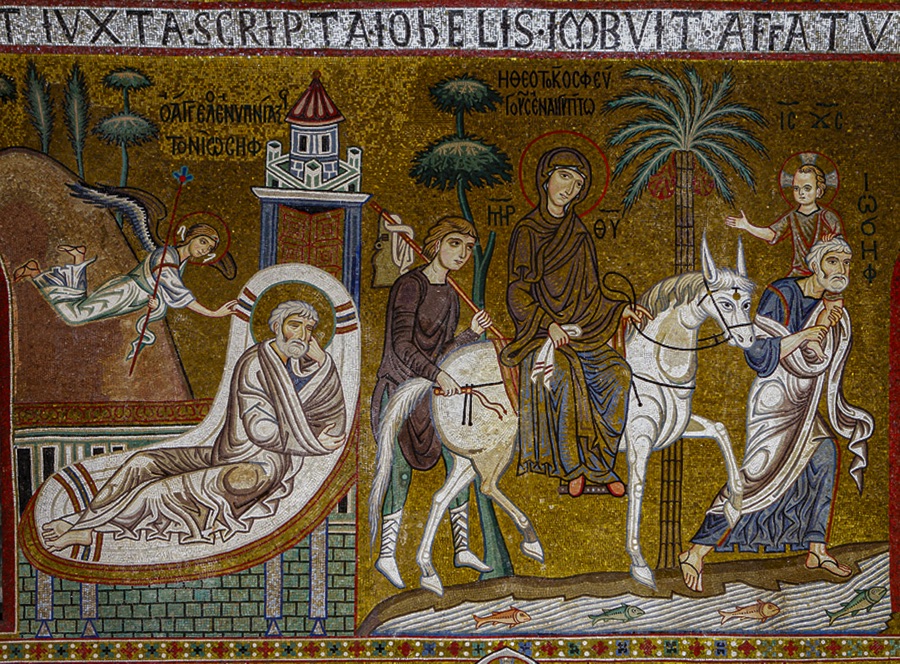 In the north transept, on the left, at the
Diaconicon
In the north transept, on the left, at the
Diaconicon
, in the bowl of the apse, the mosaic decoration shows St Joseph and the baby Jesus, and in the cupola, there is a portrait of
St Andrew
and above it, there is a depiction of the Virgin and Child.
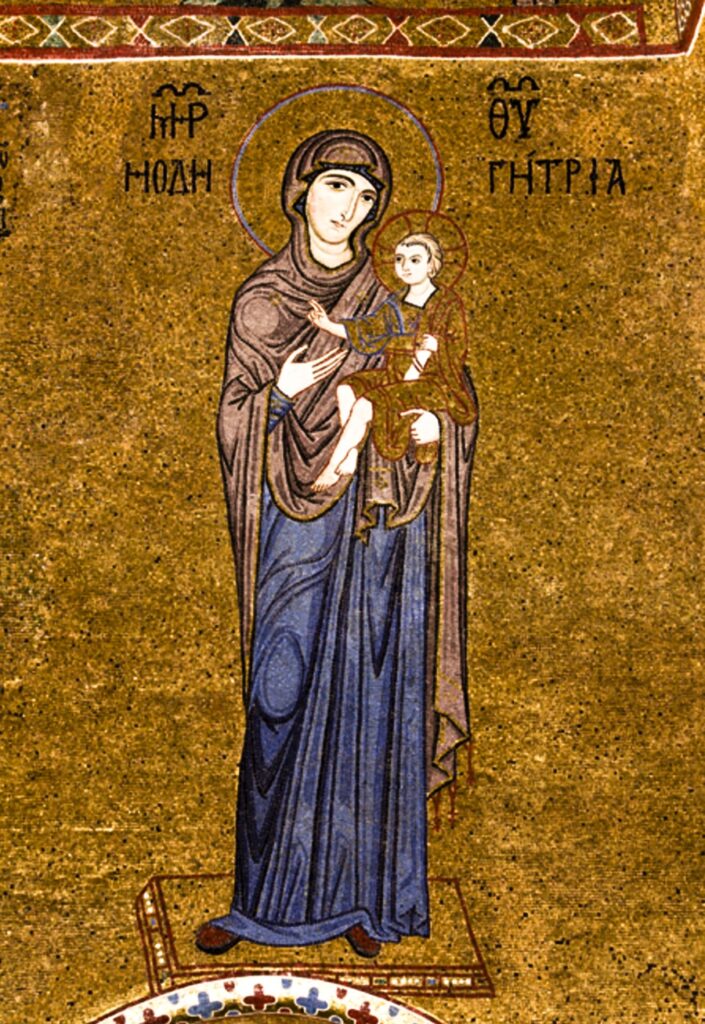 The arch separating the transept from the presbytery depicts five saints and the Ascension of Christ in the vault.
The arch separating the transept from the presbytery depicts five saints and the Ascension of Christ in the vault.